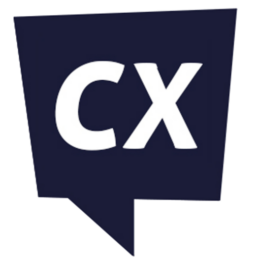The right data can make a world of difference to customer experience (CX) design, and tools like customer relationship management (CRM) and customer data platform (CDP) provide organizations with the insights they need to deliver superior CX.
Both tools drive personalization strategies and allow CX teams to build 360-degree customer profiles. Meanwhile, the CRM and CDP can also automate critical actions and events within the customer journey – such as a proactive message.
However, there are a few differences between the two solutions that one should remember.
What is Customer Relationship Management (CRM)?
A customer relationship management (CRM) system refers to a software system that helps companies consolidate the data they need to engage with customers in one place and initiate customer-facing processes.
Data processing is just one part of its capabilities. CRM also automates communications, notifies teams of changes in customer status, recommends the next-best actions, and much more.
As per a 2021 report by Grand View Research, the global CRM market was worth $52.4 billion in 2021, which will grow at an annual rate of 13.3 percent until 2030. In addition, over 91 percent of organizations with ten plus employees use a CRM.
What is a Customer Data Platform (CDP)?
A customer data platform (CDP) is a solution that collects and consolidates customer data from multiple sources to create enriched profiles, updated in near-real-time.
Typically, a CDP will coexist with various other customer handling solutions such as CRM, customer experience management tools, contact center systems, marketing automation, etc.
The job of a CDP is to receive data from structured and unstructured data sources, maintain their integrity, and ensure that there is a reliable single source of truth for organizational functions. It does not perform other ancillary activities or have a rich user interface that will help perform complex actions.
According to a 2021 MarketsandMarkets report, the global customer data platform market was worth $3.5 billion in 2021, which will increase to 15.3 billion by 2026. This indicates an annual growth rate of 34.6 percent during the forecast period.
Critical Differences Between CRM and CDP
A customer relationship management system differs from a customer data platform in the following ways:
1. CRM Solutions Cannot Typically Ingest Unstructured Data
While CRMs can process specific datasets, most solutions are incompatible with unstructured information. Typically, other solutions are necessary to process unstructured data (or big data) like social media information before it is stored in a CRM. For this reason, many organizations adopt CDP.
The primary purpose of the CRM is to track and update customer information as it passes through various stages of the conversion journey. Any information outside this structure is not in the scope of CRM.
In contrast, a CDP is versatile and can ingest information from almost any source. Its data connectors are also easier to set up, and the information is updated almost in real-time.
2. CRM Solutions Sometimes Retain Data Errors, While a CDP Ensures Data Integrity
A customer data platform will scan information from multiple sources to check for errors, inconsistencies, duplication, and other issues. It has purpose-built features that help protect against integrity-related challenges.
For example, it can conduct an automated routine scan that checks if old and irrelevant data has been retired. It also transforms data collected from the source to make it ready for organizational use. These measures ensure that decisions based on CDP data have a high chance of accuracy.
In comparison, most CRM solutions will not check data entering the system. If there is incorrect data at the source or duplication leading to analysis errors, the CRM cannot flag these issues.
Further, unless the business accesses a highly sophisticated CRM with built-in CDP capabilities, it will not be able to enforce data management and retention policies. As such, companies may risk non-compliance when handling high volumes of sensitive customer information.
3. A CRM Requires More Day-to-Day Attention
The user interface of a CRM is extremely important, as stakeholders across customer-facing functions will use it to perform daily tasks.
For instance, a marketing manager might schedule an email campaign, a salesperson might look up lead scores, or a contact center agent could scan the system for information to handle customer contacts. As a result, it relies on manual effort and is crucial to daily operations.
A CDP, on the other hand, is mainly automated, and organizations do not refer to it daily. Once the initial integrations are set up, it will automatically fetch, clean, store, analyze, update, and retire the information as per the business rules.
Marketing managers with technical skills can update the rules at regular intervals. Barring this, there is no need to use the platform’s UI daily. If used for automation, the CDP will rely on connectors that link it to other systems. The manual effort involved is minimal.
Learn how to maximize the value of the CRM within customer service by reading our article: Contact Centre Integrations That Will Bolster Your CRM Strategy







